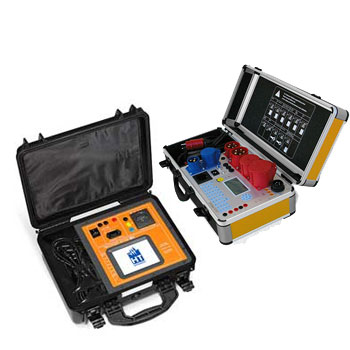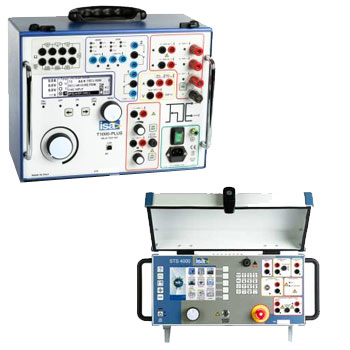- Operating pressure up to 1,000 bar
- Connection of hoses or measuring equipment such as sensors and pressure gauges
- Sampling and venting
- Coupling by hand and without system downtime - up to 700 bar
- For oil or gas applications
- Use with hydrogen possible (with reduced pressure range)
 Datasheet Datasheet |
 Flyer Flyer |
 Gaseous Hydrogen Gaseous Hydrogen |

Minimess® XTREME High Pressure – test & service ports for ultra-high pressure into the thousand-bar range
Minimess® XTREME is engineered for ultra-high-pressure (UHP) duties on test benches, water-jet/burst testing, high-pressure hydraulics, injection systems and media supply. The couplings and lines support under-pressure coupling with very low spillage, resist extreme pressure impulses, and deliver maximum tightness and safety.
Depending on series: working pressure in the 4-digit bar range, wetted materials in high-strength steel or 316/316L stainless, sealing systems with PTFE/PEEK back-ups and optional FKM/FFKM; lines as UHP microbore hoses or steel capillary/tube assemblies with protective braid; interfaces per common HP standards; accessories such as shut-off/check valves, pulse snubbers, gauges/transmitters and safety gear (whip checks, shields).
ICS Schneider Messtechnik configures the right pressure class, line and interface for your medium, temperature and safety concept—including pressure testing, calibration and documentation.
FAQ on Minimess® XTREME High Pressure
Answers on applications, pressure ratings, materials, seals, interfaces, lines, safety, testing and best practices.
Where does Minimess® XTREME excel?
In UHP applications such as pressure/burst testing, injection & clamping systems, water hydraulics, energy storage and impulse testing with high switching frequencies.
What pressure and temperature ranges are possible?
Series-dependent working pressure in the thousand-bar range (with much higher burst). Typical temperature −20…+120 °C, HT options higher. Always observe p/T derating in the datasheet.
Which media are suitable?
Hydraulic oils, water/water-glycol (with corrosion control), test fluids, fuels, inert gases. For aggressive media select specific materials/seals (e.g., 316L, PTFE/FFKM).
What materials and seals are used?
| Component | Material | Purpose |
|---|---|---|
| Body/internal parts | UHP steel / 316/316L | Strength and corrosion resistance |
| Primary seal | PTFE / FKM / FFKM | Low friction, chemical & temp resistance |
| Back-up | PEEK / back-up rings | Extrusion resistance at UHP |
How does XTREME differ from standard Minimess®?
Reinforced cone/face seats, UHP seal packs with back-ups, geometries tested for pressure shocks, reduced dead volumes and lines/fittings optimized for impulse strength.
Can I couple under pressure?
Yes—within the rated class. Minimize Δp, align axially and push to the stop until the audible/tactile click. Maintain clear safety distances and shielding.
What line options are available?
| Line | Typical class | Characteristics | Use case |
|---|---|---|---|
| UHP microbore hose DN2 | to 1,000+ bar | Very small volume, flexible, braided | Mobile tests, dynamic measurements |
| Capillary/tube assembly | to several thousand bar | Minimal expansion, top stability | Stationary rigs, burst/long-term tests |
Which interfaces are supported?
Depending on version: metric (M…), UNF, BSPP/G and UHP cone/face or special high-pressure cone threads. Adapters to gauges/transmitters and microbore hoses available.
How do I tame impulse and vibration effects?
Use short lines, prefer DN2, add a snubber/pulse damper if required, clamp lines with supports and avoid sharp bends.
What about leakage and emissions?
UHP sealing systems target very low leakage. Clean sealing faces, apply the specified torque, and protect with dust caps.
Which safety measures are mandatory?
- Use whip checks/line restraints; isolate/relieve before loosening.
- Wear face shield, goggles, gloves; use shields/guards where applicable.
- Operate only with approved media and within specified p/T.
How do I install correctly?
- Clean sealing areas; insert correct O-rings/PTFE with back-ups.
- Start threads by hand, tighten to the specified torque.
- No tape on conical sealing faces; only approved compounds for threaded sealing.
How do I leak-test the assembly?
Perform a pressure test per plan (e.g., 1.1–1.5× working pressure), hold and document. For gas service, optional helium sniff test. Archive results.
What is the expected service life?
Driven by impulse count, temperature and medium. Seals are wear parts; inspect periodically and replace by cycle/age criteria.
Typical issues & remedies
- Micro-leakage → clean seat, renew seal/back-up, verify torque.
- Hard coupling → reduce Δp, check alignment, clean seating area.
- Pressure drop → inspect line/adapters for cracks/leaks; check valves.
Which standards/docs can be supplied?
EN 10204-3.1 material certs, pressure/leak test reports, factory/DAkkS calibration; consideration of PED and customer test specs.
How do I integrate measuring devices safely?
Use UHP-rated gauges/transmitters with sufficient overpressure safety, add limiters or rupture discs if needed; route cables with EMC care and provide mechanical strain relief.
What cleanliness level is required?
Work particle-free (flush/filter), remove caps only immediately before assembly, and use compatible cleaning agents—foreign particles accelerate seal wear.
How do I choose length and routing?
Keep runs as short as possible, respect minimum bend radius, add clamps/braid, avoid heat sources and sharp edges, and prevent torsion.
Do you support design, testing & commissioning?
Yes—we define pressure class, interface, line concept and safety measures, conduct pressure tests/calibration and deliver full QA/Audit documentation.












































































































































































